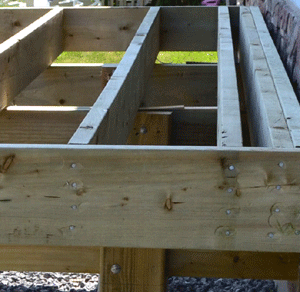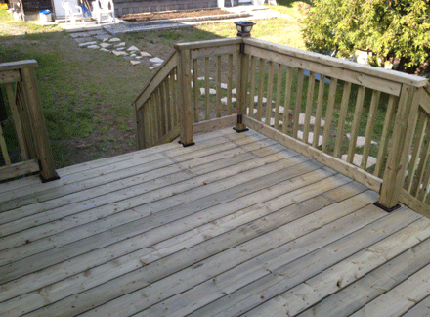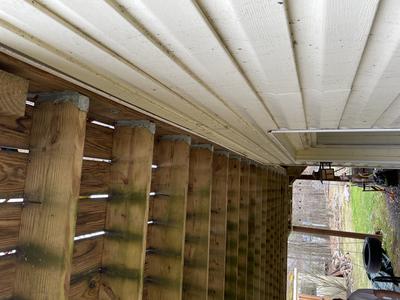Evolution Of Pressure Treated Decking
Do You Know You Have Choices?
It's true, the pressure treated decking market has changed a lot in the last ten years and continues to see new solutions.
Since at least 1940, CCA (chromated copper arsenate) was the preservation standard for outdoor wood. Then in 2004 the industry moved to phase out CCA.
Goodbye CCA, Hello ACQ
But concerns of leaching and human exposure to arsenic in residential environments caused a major change.
Everybody switched over to ACQ (alkaline copper quaternary) which was safer but more expensive and it caused corrosion of many standard metal fasteners and connectors. The ACQ can still leach out but the arsenic has been removed so it's no longer the same worry.
So it is important to use stainless steel or heavy zinc coated hardware to avoid the corrosion problem. ACQ also leaves a
very deep green tone to the wood which is unmistakable.
And Now, There Are More Options
There are two new and exciting pressure treating options for decking boards. MCA (micronized copper azole) and Thermal Treating. Both are alternative solutions to ACQ
MCA
Pressure treated lumber from the MCA process has a number of improvements.
Firstly, MCA treated wood is not so green and it is only slightly darker than the natural color which is a nice cosmetic benefit. A much more natural look to the decking.
The copper used in this process is much smaller and also water soluble. This means the copper preserving particles can penetrate much deeper into the wood rather than sit on the surface.
Deeper penetration also means there is a far smaller chance of it leaching out.
But what is really great is that you can use regular galvanized hardware and connectors. You don't need extra zinc coating or more expensive stainless steel hardware.
So look for this on the market. Here is one place you can find it.
Thermal Treating

This is a very promising new way to make pressure treated decking.
Thermal heating involves heating the wood to kill all the sugars in it that bugs and bacteria love to feed on.
No food, no decay. That's the theory.
But it's a three stage process requiring various temperatures which uses a fair amount of energy and therefore raises the cost of the decking boards.
It is positioned in the market as a higher end decking material and with good reason.
The boards don't absorb water because one of the chemicals needed for water to adhere to has been removed. This keeps the treated decking boards very stable. Twenty five year warranties are offered by this company.
Pressure Treated Lumber Is Still The Most Common
That's the latest and greatest on pressure treated decking processes. Three of them involve chemical additives and the fourth, although non-additive, uses more energy.
Some Other Great Reading On Decking Options...
Home > Deck Materials > Pressure Treated Decking




























